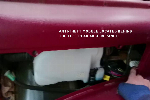DeerHunter7369
Member
- Joined
- July 10, 2013
- Messages
- 13
- Reaction score
- 0
- City, State
- WV
- Year, Model & Trim Level
- 97 XLT 4.0 SOHC
Hey guy's had a bad night so any help would be great!
First: Heard bad rattle so I decided to take valve cover off and inspect seen that the Left Timing Cassette was broken ( Why Plastic?) so went to Autozone got the Cassette, tore it down found out that my Primary Chain Tensioner was also broken (Just my luck) so went back to Autozone got it put everything back together. Tried starting it and it hit and then died. Upon further inspection I had crossed number 5 and 6 wires on the Coil Pack (My Bad). Fixed that still no start will crank and crank and crank no bad sounds just won't start.
Did a compression test, Held in-between 80 - 100 in every cylinder.
Ran a camera in the plug holes everything looks good.
Theft light doesn't come on while cranking.
Double checked and everything is tightened up and all sensors are plugged in.
Thanks in Advance for anyone that can help, Zack
First: Heard bad rattle so I decided to take valve cover off and inspect seen that the Left Timing Cassette was broken ( Why Plastic?) so went to Autozone got the Cassette, tore it down found out that my Primary Chain Tensioner was also broken (Just my luck) so went back to Autozone got it put everything back together. Tried starting it and it hit and then died. Upon further inspection I had crossed number 5 and 6 wires on the Coil Pack (My Bad). Fixed that still no start will crank and crank and crank no bad sounds just won't start.
Did a compression test, Held in-between 80 - 100 in every cylinder.
Ran a camera in the plug holes everything looks good.
Theft light doesn't come on while cranking.
Double checked and everything is tightened up and all sensors are plugged in.
Thanks in Advance for anyone that can help, Zack










